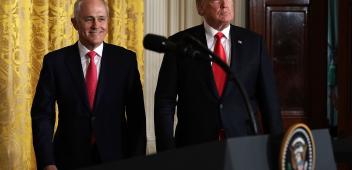Blame austerity, not the RBA for post-GFC slow growth
Ross Garnaut is wrong to fault the Reserve Bank for not cutting rates during the ‘Dog Days’ of 2013-2019. The real culprit was elsewhere. Originally published in the Australian Financial Review.

Ross Garnaut’s “Reset” provides another valuable contribution to the debate on Australia’s post-COVID-19 future. But in reviewing the past, he mis-assesses macro-policy in explaining what he calls the “Dog Days” of 2013-2019. It was fiscal austerity, not monetary policy, that restrained growth in this period.
Garnaut says monetary policy was too tight, missing the opportunity to get unemployment down to match the US.
“Other central banks adjusted more swiftly to the new lower cost of capital by lowering the interest rates that they control more than the Reserve Bank of Australia lowered Australian policy rates. This caused the foreign exchange value of the Australian dollar to be higher than it otherwise would have been.”
In the four years following the 2008 global financial crisis, Australian interest rates were clearly higher than those in the US, because the country had come through the GFC well, with no financial stability issues. GDP continued to grow at a reasonable pace, and inflation was at the high end of the 2-3 per cent range.
By 2013, commodity prices had fallen from their late-2011 peak. The real exchange rate followed commodity prices down, losing about 20 per cent compared with the peak. The RBA’s overnight cash rate was lowered quickly and substantially.
True, Australia’s policy rate was above America’s, reflecting their very different GFC experiences. Their financial sector collapsed. Emergency measures were needed, in the form of a zero Fed-funds rate plus vigorous unconventional monetary policy to prevent a 1930s-style collapse. These crisis settings were was still needed in 2013 because America’s recovery was feeble, held back by the balance-sheet legacy of the GFC.
Should Australia have matched these emergency settings, in our non-emergency environment, to keep the exchange rate weaker than the market equilibrium?
Bond differentials
From 2013 to 2019, the differential between Australian and American policy rates averaged less than one percentage point – not enough to have much effect on the exchange rate. If the objective was a lower exchange rate, it would have been more effective to push down the bond rate with our own QE. Foreign investors held three-quarters of our bonds, and so were more sensitive to bond differentials, rather than policy rates.
Any competitive advantage from a lower parity would have come at a corresponding disadvantage to our trading partners. Hence the strong international pressure not to attempt this kind of “beggar-thy-neighbour” policy. America is super-sensitive to “currency manipulation”.
The beggar-thy-neighbour policy that Garnaut advocates would have been hard to justify in a growing economy, albeit not fast enough to reduce unemployment as much as we all would have liked.
COVID-19 provided a different environment for unconventional monetary policy. It required a huge increase in the budget deficit, with challenging funding needs. At the same time, banks had to cosset current borrowers with loan-servicing forbearance. Lower borrowing costs for the government and banks was the sensible prescription. In these circumstances, no one could accuse the RBA of “currency manipulation”.
In all this discussion of growth rates, Garnaut neglects the role of fiscal policy. Australia’s deficit was about 5 per cent of GDP as the GFC unfolded. This was sensible. But then, over the 2013-2019 period, the budget returned to near-balance. It was still in deficit over this period, but its impact on growth comes from the change in the budget balance, which was unambiguously contractionary.
We can argue over the exact size of the budget multiplier but, since Olivier Blanchard’s mea culpa about the IMF’s underestimation of the multiplier in the post-GFC period, a multiplier of about 1.5 seems sensible. Thus, on average over this period, budget austerity took nearly 1 per cent off growth every year.
Garnaut seems to endorse this austerity. In his 2013 book, he makes it clear that “it is the combination of tighter budgets and looser money that takes the dollar down”. Some would argue that the austerity was needed to get the deficit down quickly to “reload the fiscal cannon”. But whatever your view on this debate, it is hard to deny that austerity undermined growth.
Meanwhile, monetary policy was “pedal to the metal”, exercising a strong expansionary influence with spectacularly low interest rates. These rates were simultaneously driving a boom in asset prices, including dwellings and housing debt. Fiscal policy, on the other hand, was pulling hard on the reins.
In praising America for doing better in this period, Garnaut misses Donald Trump’s ill-considered 2017 company-tax reduction. This strong fiscal stimulus got US unemployment down to 3.5 per cent. It demonstrated the power of fiscal policy but meant that the US began the COVID-19 crisis with a budget deficit of 5 per cent of GDP and rising public debt.
There is no need to follow that example – just aim for a sensible balance between monetary and fiscal policy.
Stephen Grenville is a former deputy governor of the Reserve Bank of Australia and a non-resident fellow of the Lowy Institute



